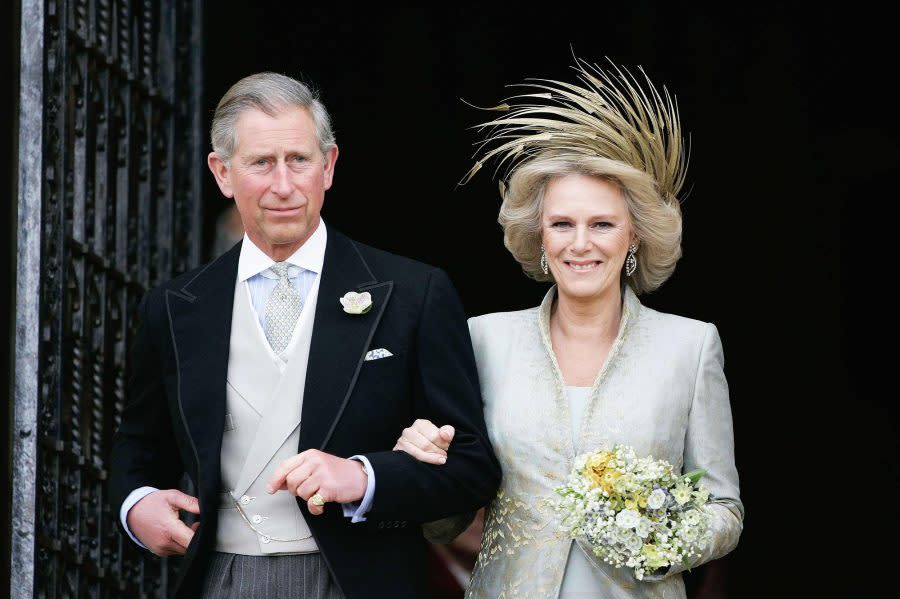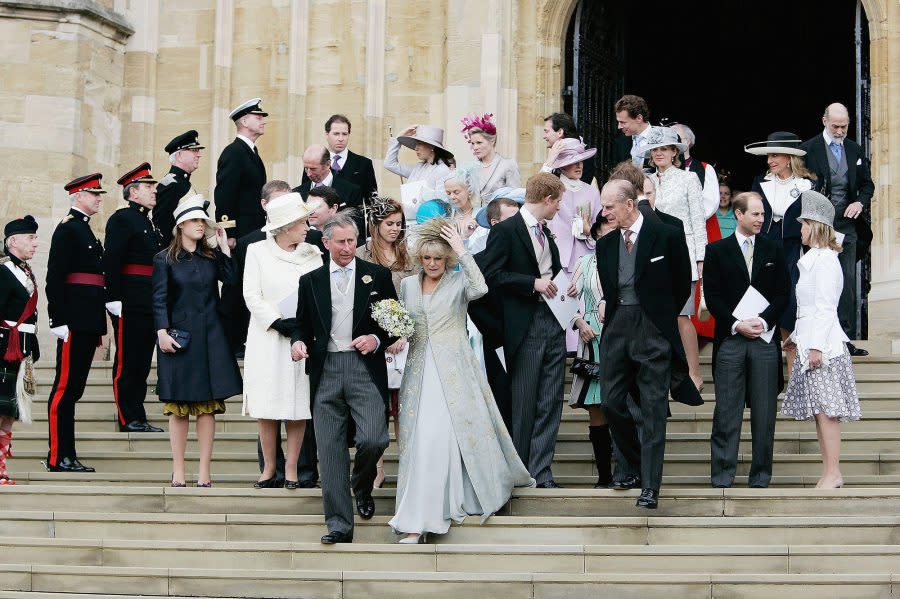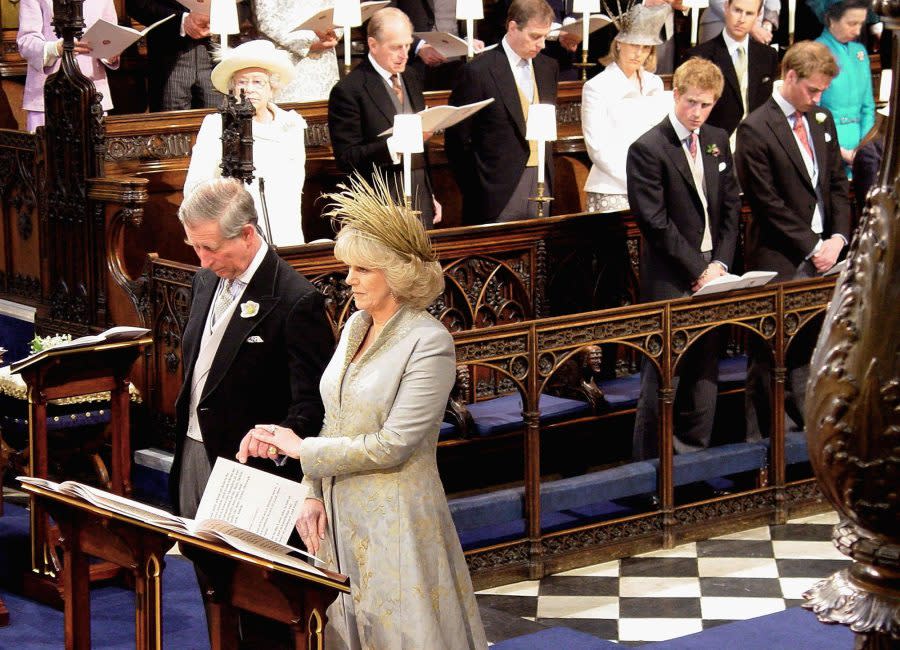Looking Back at King Charles III and Queen Camilla’s Wedding 19 Years Later

King Charles III and Queen Camilla officially tied the knot on April 9, 2005 — but their nuptials were full of drama behind-the-scenes.
Instead of the traditional royal wedding full of public fanfare and crowds around Buckingham Palace, the couple kept their wedding low-key with only 28 people in attendance — including their respective children. (Charles shares Prince Harry and Prince William with his ex-wife Princess Diana. Camilla and ex-husband Andrew Parker Bowles share daughter Laura and son Tom.)
Charles and Camilla’s marriage took place nearly 10 years after the now-king and first wife Diana’s divorce was finalized. (Diana died at age 36 nearly one year later.)
The future king and queen’s wedding ceremony was rooted in controversy at the time. So much so that the late Queen Elizabeth II and Prince Philip — Charles’ parents — weren’t in attendance.
King Charles III and Queen Camilla’s Relationship Timeline
While questions about their relationship have continued to arise over the years, Charles and Camilla have proved critics wrong and kept their marriage strong.
Keep scrolling for a look back at the details of King Charles III and Queen Camilla’s 2005 wedding:
Where Did Charles and Camilla’s Wedding Take Place?

Their small civil ceremony took place at Windsor Guildhall in April 2005. Following the nuptials, the duo received a religious blessing at St. George’s Chapel at Windsor.
Charles and Camilla’s ceremony was held nearly 35 years after their first meeting.
What Did the British Public Think About Charles and Camilla?
Initially, Charles and Camilla’s out-in-the-open relationship was not received well by the British public — however, the perception has since changed into a more positive one.
Charles’ ongoing affair with Camilla— which reportedly started in 1986 — during his marriage to Diana, the people’s princess, was a major part of their respective divorces. Camilla was previously referred to as the “most hated woman in Britain” because of the affair and the public’s devotion to Diana.
Biggest Royal Family Scandals Through the Years
Charles later admitted to the infidelity saying that the affair only started when his marriage to Diana had “irretrievably broken down, us both having tried.”
Why Did Queen Elizabeth II Skip Charles and Camilla’s Wedding?

Because of their respective divorces, Charles and Camilla’s wedding was considered controversial. Because the queen was a member of the Church of England, divorce was a huge no-no among members. (Elizabeth’s uncle, King Edward VIII, infamously abdicated the throne in 1936 in order to marry his beloved, Wallis Simpson, an American divorcée.) That’s being said, Elizabeth did eventually give Charles and Camilla permission to marry — however, she skipped out on the ceremony.
While she upheld the Church of England by missing the wedding, Elizabeth and her late husband, Philip, did hold a reception for the newlyweds at Windsor Castle.
How Did Camilla Break Tradition With Her Wedding Outfit?
Most notably, Camilla did not wear a tiara with her wedding dress — which is tradition with a royal wedding. Over the year’s it’s been widely reported that she skipped out on the headpiece for two reasons, the first being that Camilla had been married before. The second reason was because she and Charles didn’t have the traditional church wedding.
Camilla also rewore her wedding dress, breaking the tradition that royal brides usually wear their wedding dresses only once. Following her 2005 nuptials, Camilla donned the white shift dress to a 2007 event opening the National Assembly of Wales.
